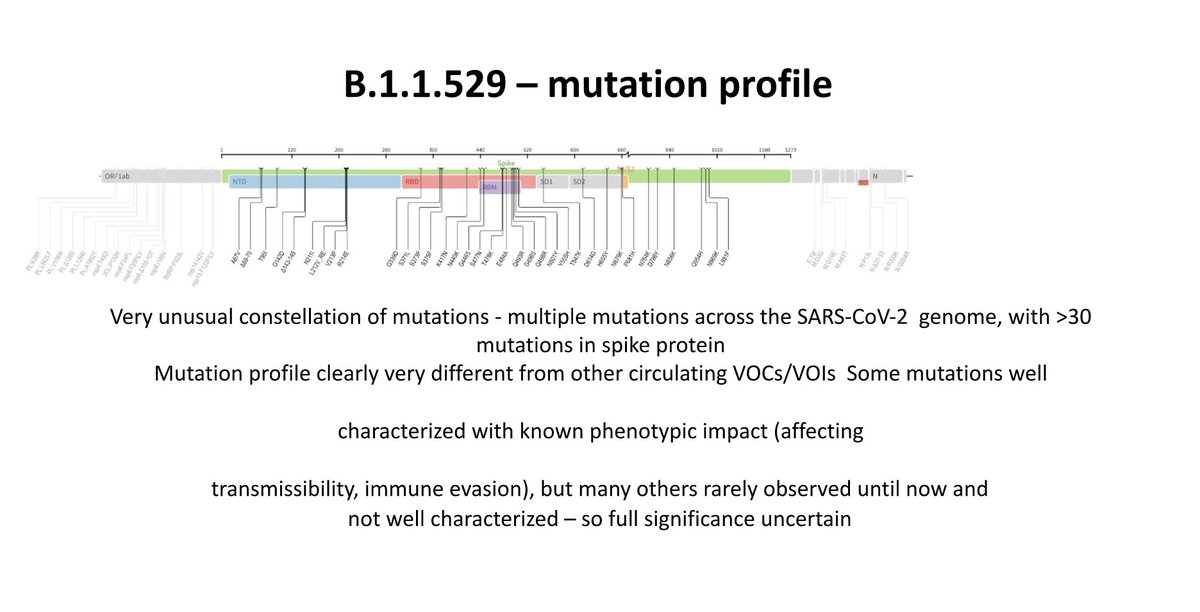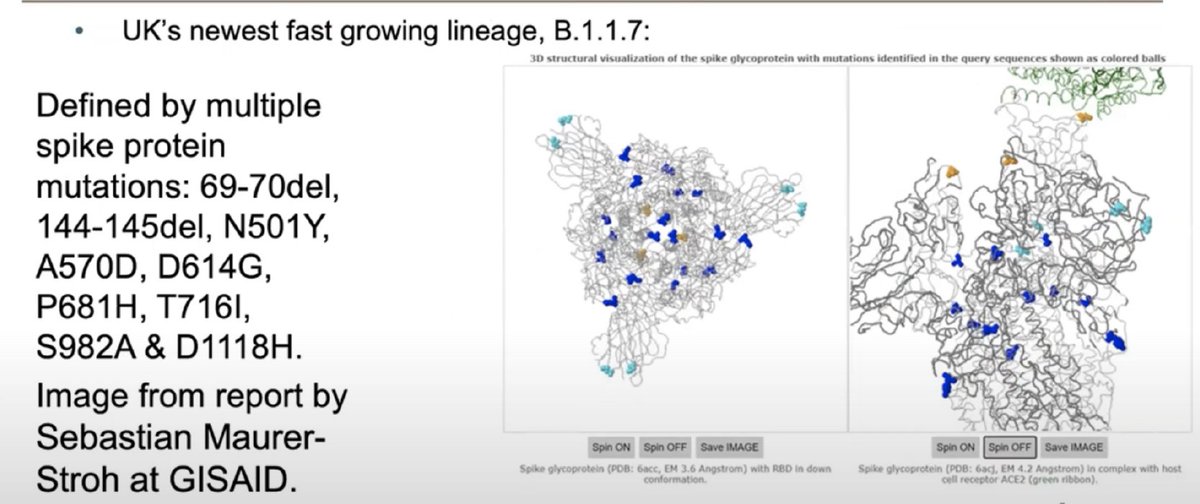
Important preliminary data from SA looking at whether vaccine elicited antibodies are still effective against #Omicron.
Good & bad news: There is a big drop in neutralisation activity, but it's partial & hybrid (vax + infection) holds fairly well. 🧵
Good & bad news: There is a big drop in neutralisation activity, but it's partial & hybrid (vax + infection) holds fairly well. 🧵
https://twitter.com/mugecevik/status/1466845581788295172?s=20
This is a live virus neutralisation assay. Neutralisation studies can tell us whether levels of Ab in the blood (convalescent and vaccinated plasma) are high enough to prevent the virus from infecting cells in the lab.
https://twitter.com/mugecevik/status/1466845570027429892?s=20
.@sigallab & colleagues tested plasma from those who received vax only (orange) & those who had vax + previous infection (green) and showed a significant (~40x) decline in neutralisation activity, but this was not a complete escape & reduction was less in hybrid anti-sera. 

What these results tell us?
📍This doesn't mean vaccines will be 40x less effective
📍 Those who received 2 doses of vax still retained neutralisation
📍Hybrid immunity provides much better neutralisation, which means we could expect fairly good results in boosted individuals
📍This doesn't mean vaccines will be 40x less effective
📍 Those who received 2 doses of vax still retained neutralisation
📍Hybrid immunity provides much better neutralisation, which means we could expect fairly good results in boosted individuals
Remember, antibodies are important, but the immune response is so much more than that.
So whilst the ability of a persons sera to neutralise the virus is desirable, it is certainly not essential when it comes to protecting against disease.
So whilst the ability of a persons sera to neutralise the virus is desirable, it is certainly not essential when it comes to protecting against disease.
https://twitter.com/mugecevik/status/1466845631847309318?s=20
We’ve been waiting for these results. I have to say it's better than I expected overall. Yes, it means we will see more breakthrough infections w/ omicron, but hybrid immunity holds pretty well & hopefully we will see similar data w/ boosted antisera.
https://twitter.com/mugecevik/status/1466846157708083209?s=20
Caveats: this is a small study, inc 14 samples, so I would want to see results from a larger cohort inc boosted antisera. There are also other limitations of neutralisation studies👇 Remember these results don't say anything about protection from disease.
https://twitter.com/mugecevik/status/1466845573319995400?s=20
Lastly, many thanks to @sigallab & the South African team for this important work and making this immediately available. 🙏
Link to the paper: secureservercdn.net/50.62.198.70/1…
Link to the paper: secureservercdn.net/50.62.198.70/1…
New neutralisation data by @CiesekSandra et. al. this morning. We are yet to see the full paper, but there is a ~40 fold drop in neutralisation in 2x vaccinated individuals w/ omicron compared to delta.
[The % figures do not equate to vaccine efficacy]

[The % figures do not equate to vaccine efficacy]
https://twitter.com/CiesekSandra/status/1468465347519041539?s=20

These results indicate that 2 doses of vaccines may not be sufficient enough to prevent *infection* (not severe disease), but sera from those who received booster still showed some neutralisation, meaning that boosters will help restore this decline to an extent.
Remember that we are not back to square one w/ omicron. Immune responses are not all or nothing. Antibodies are important, but the immune response is so much more than that. Protection from severe disease will likely be retained as other defences are less impacted by variants.
So far these two studies show neutralisation can be restored to an extent w/ boosters against omicron, which would align with previous data showing regular boosters (not variant specific) significantly broaden the coverage & breath of antibodies & T cells to address variants. 

Yes, we may need omicron specific vaccines, esp if omicron is to outcompete delta globally, which we don't know yet. But, at present Delta remains the dominant variant globally. So, don't wait for an updated vaccine, get your primary 2 doses and/or booster dose immediately.
Omicron is spreading fast, but we don't know how it will play out in different populations. For example, wastewater sampling in Denmark suggests that it's already widespread. This might mean it will be difficult to contain the spread of omicron even with most stringent measures.
Nevertheless, we are certainly in a much better place than at start of the pandemic when the whole population was immune-naive to SARS-CoV-2. So, while we may see more breakthrough infections w/ omicron, this wave may have a low disease burden compared to March 2020.
• • •
Missing some Tweet in this thread? You can try to
force a refresh














